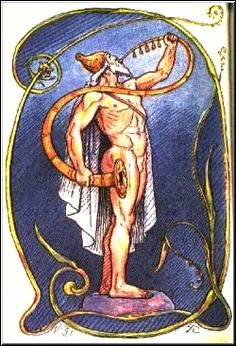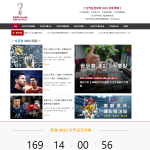
Attempting to avert civil war, the Icelandic parliament voted in Christianity, however for some time tolerated heathenry within the privacy of a person's home. Norway, however, had a number of civil wars within the eleventh century, which ended using the burning from the Temple at Uppsala. In England, however, Christianization happened earlier and sporadically, rarely by pressure. Conversion by coercion was sporadic through the places that Norse gods have been worshipped. However, the conversion didn't happen overnight. Christian local clergy did the most beautiful to educate the people the Norse gods were demons, however their success was limited and also the gods never grew to become evil within the popular mind in many of Scandinavia.
Two located and from isolated settlements can illustrate how lengthy the Christianization required. Archaeological studies of graves in the Swedish island of Lovön have proven the Christianization required 150-two centuries, that was a reasonably longer timeframe, considering that it was an area in close closeness to both secular and non secular government bodies.[9] Otherwise you will find couple of accounts in the fouteenth towards the 18th century, however the local clergy, for example Olaus Magnus (1555) authored concerning the difficulties of extinguishing that old beliefs.[10] Within the nineteenth and early last century Swedish folklorists documented what commoners believed, and just what surfaced were many surviving traditions from the gods of Norse mythology.[11] At that time, however, the traditions have been sufficiently decontextualized regarding have forfeit the cohesiveness attested to in Snorri's accounts. Most gods have been forgotten and just the hunting Odin and also the giant-slaying Thor figured in several legends. Freyja was pointed out a couple of occasions and Baldr only survived in legends about place names.
Modern influences
Day Origin
| Monday | Moon's day |
| Tuesday | Tyr's (Tiw's) day |
| Wednesday | Odin's (Wodin's) day |
| Thursday | Thor's day |
| Friday | Frigg's or Freyja's day |
| Sunday | Sun's day |
The gods of Norse and Germanic mythology have remaining numerous traces in aspects of everyday existence in many Western countries (especially individuals using a Germanic language). A good example of this can be found in a few of the names of the era of the week, that have been formerly modeled in Latin following the planets (e.g. Sun, Moon, Mars, Mercury, Jupiter, Venus, Saturn) but eventually a few of the names (i.e. for Tuesday right through to Friday) were substituted for what they are called of divine Germanic equivalents (see table inset).
Additional factors of Norse mythology survived into modern occasions like the Norse belief in future continues to be very firm until modern occasions. Because the Christian hell was similar to the abode from the dead in Norse mythology among the names was lent in the old belief, Helvíti i.e. Hel's punishment. Some aspects of the Yule traditions were also preserved, like the Swedish tradition of slaughtering the pig at Christmas (Christmas pork), which initially was area of the sacrifice to Freyr.
Germanic neopaganism
The nineteenth and twentieth centuries have experienced tries to revive that old Germanic religion both in Europe and also the U . s . States under various names, including Ásatrú ("Aesir Belief"), Odinism, Wotanism, Forn Sed ("Old Custom") or Heathenry. In Iceland, Ásatrú was identified by the condition being an official religion in 1973, which legalized its various events (e.g. marriage and child-naming). It's also become the official and legal religion out of all Nordic countries.
Modern popular culture
The romanticism surrounding Norse mythology among American and European intellectuals also impacted popular culture. For example, Richard Wagner's Ring Cycle (Der Ring plusieurs Nibelungen) is heavily based on Norse mythology, including tales of Odin, Frigga, Loki, the Valkyries, and Ragnarok.
Subsequently, J.R.R. Tolkien's God from the Rings seemed to be heavily affected by the indigenous beliefs from the pre-Christian Northern Europeans. As that actually work grew to become popular, aspects of its fantasy world moved continuously into popular perceptions from the fantasy genre. Actually, nearly any modern fantasy novel contains such Norse creatures as elves, dwarves, and frost giants. In this manner, Norse mythology continues to be largely (though not directly) responsible to add mass to a whole literary genre.
Finally, Norse figures and ideas are often present in such diverse media as Japanese animation, game titles, and comics (for instance, Marvel Comics Thor).
Notes
- ↑ Some scholars have speculated this tale symbolized how a gods of invading Indo-European tribes supplanted older nature-deities from the aboriginal peoples, although it ought to be firmly noted this is conjecture. Other government bodies (compare Mircea Eliade and J. P. Mallory) think about the Aesir/Vanir division to become this is the Norse expression of the general Indo-European division of divinities, parallel to that particular of Olympians and Titans in Greek mythology, as well as in areas of the Mahabharata. More particularly, Georges Dumézil, among the foremost government bodies around the Norse tradition along with a noted comparitivist, argues quite persuasively the Aesir / Vanir distinction is an element of the bigger triadic division (between ruler gods, warrior gods, and gods of agriculture and commerce) that's echoed one of the Indo-European cosmologies (from Vedic India, through Rome and in to the Germanic North). Further, he notes this distinction conforms to patterns of social organization found throughout these societies. See Georges Dumézil's Gods from the Ancient Northmen (especially pgs. xi-xiii, 3-25) for more information.
- ↑ Snorri Sturluson, Gylfagining (LI), page 81 in Brodeur's translation.
- ↑ Snorri Sturluson, Gylfagining (LIII), page 83 in Brodeur's translation.
- ↑ Munch, 13 Orchard, 45-47. Turville-Petre notes these beliefs are "strongly affected by Christian eschatology and meaning, however the dim hope the beloved god would eventually return didn't be a consequence of Christianity alone. Following the dying of Eirik Bloodstream-axe, about the center of the tenth century, his widow commissioned a memorial lay, where the poet described how Odin and the players welcomed Eirik in Valhalla. Because the dead king contacted, the benches creaked, because they would if Balder were coming back.
- ↑ ibn Fadlan, An Excerpt in the Risāla, Describing the Funerary Customs of Swedish Vikings around the Volga (A.D. 921-2), converted by H. M. Smyser. Utilized online at: Ahmad ibn-Fadlan: Letters Around the Vikings Retrieved The month of january 17, 2017.
- ↑ DuBois, 43, 60 Turville-Pietrie, 50-55, 64-70.
- ↑ Although both religions have the Indo-European tradition, the sacrifice described within the Ibn Fadlan account isn't to be mistaken with the oft-contested Hindu practice of Sati.
- ↑ DuBois, 67.
- ↑ DuBois, 58-68.
- ↑ See Magnus's extensive description in the multi-volume "Description from the Northern Peoples," converted by Peter Fisher and Humphrey Higgens, edited by Peter Foote with annotation produced from the commentary by John Granlund. (London : Hakluyt Society, 1996-1998).
- ↑ See, for instance, Anne-Sofie Gräslund's "New perspectives with an old problem: Uppsala and also the Christianization of Norway" in Christianizing Peoples and Converting Individuals (Turnhout: Brepols, 2000) and Béla Harmati's The Church and Civil Religion within the Nordic Countries of Europe, (Geneva, Europe: Lutheran World Federation, 1984).
References
Primary Sources
- The Prose Edda Retrieved The month of january 17, 2017.
- The Poetic Edda Retrieved The month of january 17, 2017.
- Gesta Danorum Retrieved The month of january 17, 2017.
- Ynglingasaga Retrieved The month of january 17, 2017.
Modern retellings (frequently inventive)
- Lance armstrong, Fredrick and Dave Puls. It Originated From Animatus. Rochester, NY: Animatus Studio, 2004. DVD. Includes The Derf: The Viking Trilogy, a cartoon series featuring the Norse gods. Retrieved The month of january 17, 2017.
- Colum, Padraic. The Kids of Odin: A Magazine of Northern Myths, highlighted by Willy Pogány. New You are able to, Macmillan, 1920. Reprinted 2004 by Aladdin. ISBN 0689868855
- Sacred Texts: The Kids of Odin. (Highlighted.) Retrieved The month of january 17, 2017.
- Crossley-Holland, Kevin. The Norse Myths. New You are able to: Pantheon Books, 1981. ISBN 0394748468. Also released as The Penguin Book of Norse Myths: Gods from the Vikings. Harmondsworth: Penguin. ISBN 0140258698
- d'Aulaire, Ingri and Edgar. "d'Aulaire's Book of Norse Myths." New You are able to: New You are able to Overview of Books, 1967.
- Guerber, H. A. Myths from the Norsemen: In the Eddas and Sagas. London: George G. Harrap, 1909. Reprinted 1992, Mineola, NY: Dover Publications. ISBN 0486273482 (The scholarly veneer is deceitful. Material from primary sources, scholarly speculation, and secondary invention is indistinguishably mixed.)
- Keary, A & E, The Heroes of Asgard. New You are able to: Macmillan Company. Reprinted 1982 by Smithmark Pub. ISBN 0831744758 Reprinted 1979 by Pan Macmillan. ISBN 0333078020
- Baldwin Project: The Heroes of Asgard Retrieved The month of january 17, 2017.
- Mable, Hanilton Wright. Norse Tales Retold in the Eddas. Mead and Company, 1901. Reprinted 1999, New You are able to: Hippocrene Books. ISBN 0781807700
- Baldwin Project: Norse Tales Retold in the Eddas Retrieved The month of january 17, 2017.
- Mackenzie, Jesse A. Teutonic Myth and Legend. New You are able to: W. H. Wise & Co. 1934. Reprinted 2003 by College Press from the Off-shore. ISBN 1410207404
- Sacred Texts: Teutonic Myth and Legend. Retrieved The month of january 17, 2017.
- Munch, Peter Andreas. Norse Mythology: Legends of Gods and Heroes, Scandinavian Classics, 1927. Trans. Sigurd Bernhard Hustvedt. New You are able to: American-Scandinavian Foundation, 1963. ISBN 0404045383
- Rydberg, Viktor. Teutonic Mythology, trans. Rasmus B. Anderson. London: Swan Sonnenschein & Co. Reprinted 2001, Elibron Classics (ISBN 1402193912). Reprinted 2004, Kessinger Publishing Company (ISBN 0766188914).
- General secondary works
- Branston, John. Gods from the North. London: Thames and Hudson, 1980. (Revised from your earlier hardback edition of 1955). ISBN 0500271771
- Davidson, H. R. Ellis. Gods and Myths of Northern Europe. Baltimore: Penguin, 1964. Re-creation, 1990, by Penguin Books. ISBN 0140136274
- Davidson, H. R. Ellis. Scandinavian Mythology. London and New You are able to: Hamlyn, 1969. ISBN 0872260410. Reissued 1996 as Viking and Norse Mythology. New You are able to: Barnes and Noble.
- de Vries, Jan. Altgermanische Religionsgeschichte 2 vols., second. erectile dysfunction. Grundriss der germanischen Philogie, 12–13. Berlin: W. de Gruyter. (Generally considered probably the most authoritative current standard reference.)
- Dumézil, Georges. Gods from the Ancient Northmen. Edited and converted by Einar Haugen. Berkeley, CA: College of California Press, 1973. ISBN 0520035070
- Grimm, Jacob. Teutonic Mythology, 4 vols. Converted by S. Stallybras. London. Reprinted 2003 by Kessinger (ISBN 0766177424, ISBN 0766177432, ISBN 0766177440, ISBN 0766177459). Reprinted 2004 Dover Publications (ISBN 0486436152 (4 vols.), ISBN 0486435466, ISBN 0486435474, ISBN 0486435482, ISBN 0486435490).
- Lindow, John. Scandinavian Mythology: An Annotated Bibliography, Garland Folklore Bibliographies, 13. New You are able to: Garland, 1988. ISBN 0824091736
- Lindow, John. Norse Mythology: Helpful tips for the Gods, Heroes, Rituals, and Beliefs. Oxford: Oxford College Press, 2001. ISBN 0195153820 (A dictionary of Norse mythology)
- Mirachandra. Treasure of Norse Mythology Volume I 2006. (the german language) ISBN 978-3922800996
- Orchard, Andy. Cassell's Dictionary of Norse Myth and Legend. London: Cassell, 1997. ISBN 0304363855
- Page, R. I. Norse Myths (The Legendary Past). London: British Museum and Austin: College of Texas Press, 1990. ISBN 0292755465
- Simek, Rudolf. Dictionary of Northern Mythology. Converted by Angela Hall. Cambridge: ). S. Maker, 1993. ISBN 0859913694. Re-creation 2000, ISBN 0859915131
- Simrock, Karl Frederick. Handbuch der deutschen Mythologie. 1853–1855.
- Turville-Petre, E. O. Gabriel. Myth and Religion from the North: The Faith of Ancient Scandinavia. London: Weidenfeld & Nicolson. Reprinted 1975, Westport, CT: Greenwood Press, 1964. ISBN 0837174201
Exterior links
All links retrieved October 3, 2016.
- Timeless Myths: Norse Mythology – Information and tales from Norse and Germanic literatures
- Index of Old Norse/Icelandic Skaldic Poetry (in Icelandic and British)
- Project Runeberg – a Nordic equal to Project Gutenberg
- Runes Alphabet of Mystery &ndahs Norse Gods, Goddesses, Giants, Dwarves and Wights
Resourse: http://newworldencyclopedia.org/entry/


